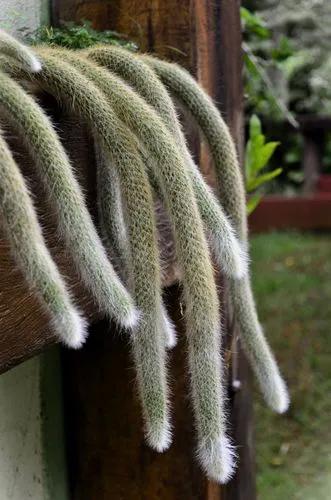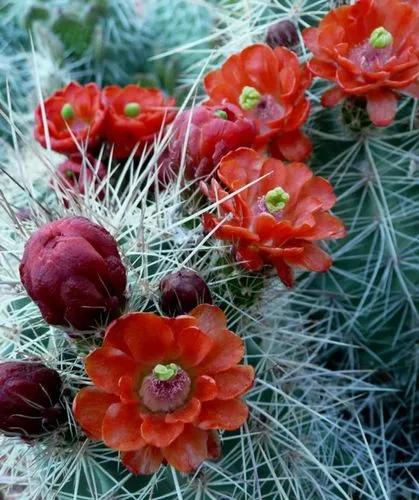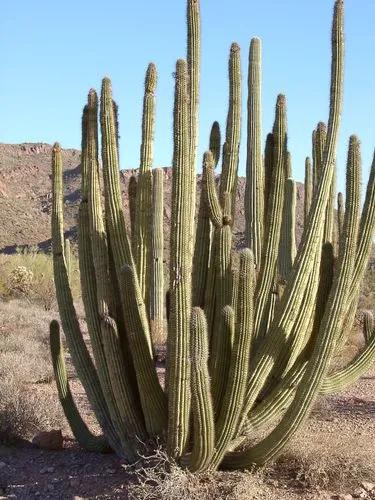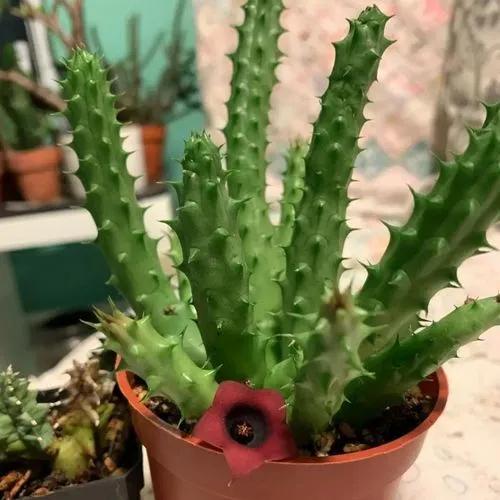Welcome to the world of the Blue Torch Cactus (Pilosocereus Pachycladus). This unique, eye-catching cactus is native to tropical and subtropical regions of Central and South America and would make a beautiful addition to any plant collection.
Blue torch cactus Care
Pilosocereus pachycladus



The Blue Torch Cactus is identified as an upright, columnar-shaped plant native to the Sonoran Desert in Arizona and Mexico. Pilosocereus pachycladus can grow up to 10 feet (3 m) tall. It's blue in color, and the blue gets even more intense as the cactus ages. This cactus has downy fur along the ribs and beautiful golden spines. The crown is usually covered in deep purple flowers, blooming in summer, and attracting various pollinators.
How to Care for the Plant

Water

Like most cacti, Blue Column Cactus does not require frequent watering. Give the plant an infrequent deep drink only when the soil dries completely. Reduce hydration to once every three weeks in winter to prevent overwatering.

Pruning

It’s not necessary to prune this cactus, as it’s a slow-growing plant. Cutting off too much can damage the plant.

Fertilizer

Preferring a poor-in-nutrients sandy soil, this cactus does not require frequent fertilization. However, if you’d like to give it extra feeding, apply a balanced 10-10-10 NPK fertilizer once a month during the spring-summer growing season. Make sure not to overfertilize the plant as it can damage roots. Stop feeding in fall and winter, as the cactus goes dormant.

Sunlight

Blue Torch Cactus benefits from warm temperatures and bright sunlight. When kept indoors, make sure to place the cactus near a window to ensure it receives at least 6 hours of ample, indirect light per day. When winter comes, it's best to keep the cactus in a slightly cooler area with indirect light, as bright sun exposure can cause sunburn.

Soil

Blue Torch Cactus prefers a slightly acidic to neutral (6-7 pH), specifically combined for cactuses and succulents, a well-draining potting mix. You can improve the drainage of your current soil by mixing it with perlite or sand in equal parts.

Propagation

The easiest way to propagate Blue Column Cactus is through stem cuttings. Cut off a 3-4 inches (7-10 cm) long stem section and let it dry for several days before planting. Put the stem into a well-draining potting mix and water it sparingly until a new growth appears.

Temperature

Like most cacti, the Blue Torch Cactus prefers a 75-90℉ (25-32℃) temperature range during the spring-summer growing season. It can also tolerate short periods of as low as 50-59˚F (10-15 ˚C), but it is best not to expose this cactus to cold temperatures.

Container

As this cactus grows quite tall, make sure to choose a container that is stable enough not to tip over under the plant’s weight. Choose the pot that is slightly bigger than the cactuses root ball. It should also contain draining holes to allow excess water to drain, preventing root rot.

Fun fact

Pilosocereus pachycladus is believed to be used in Central America for its medicinal properties. This cactus was valued for its anti-inflammatory, anti-diabetic, and anti-cancer effects; thus, used for treating arthritis, high blood pressure, and skin conditions such as rashes, burns, wounds, and infections.

Popularity

7,003 people already have this plant 1,172 people have added this plant to their wishlists
Discover more plants with the list below
Popular articles






